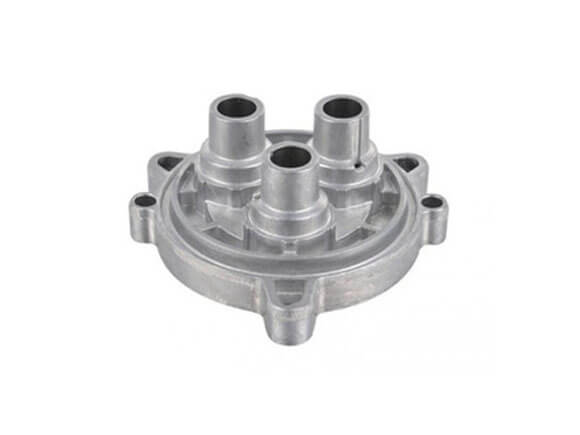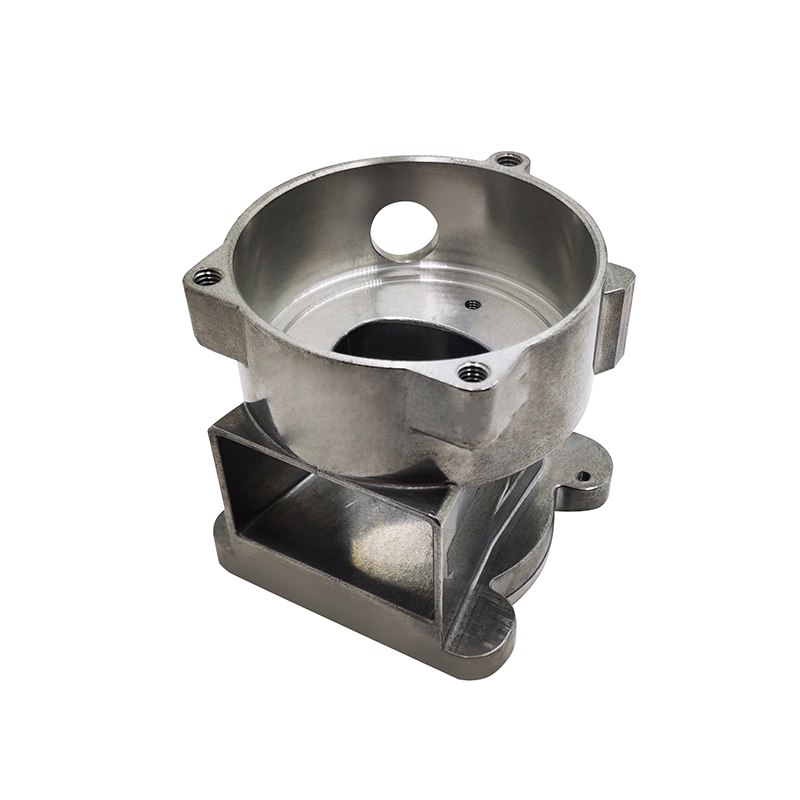Explore new trends in Precision aluminum casting for industrial applications
The Relevance of Light Weight Aluminum Casting in High-Quality Manufacturing Techniques
Aluminum casting has actually become a foundation in top notch manufacturing strategies. Its light-weight properties and exceptional toughness make it a favored choice for numerous sectors. Suppliers take advantage of its design adaptability and marginal waste generation. As the need for sophisticated materials expands, understanding the subtleties of aluminum casting becomes crucial. This exploration reveals not only its advantages but additionally the developing technologies that form its future in manufacturing. What exists in advance for this innovative procedure?

The Advantages of Light Weight Aluminum Casting
Although different casting techniques exist, light weight aluminum spreading stands apart due to its numerous advantages. Among the main advantages is its lightweight nature, which substantially lowers transportation prices and energy intake in applications. Aluminum likewise exhibits outstanding rust resistance, making it perfect for durable components in varied environments. The spreading process permits complex designs, allowing suppliers to generate complex forms with high accuracy and minimal waste. Furthermore, light weight aluminum has premium thermal and electrical conductivity, making it appropriate for an array of industrial applications. The high strength-to-weight ratio boosts the structural honesty of cast products, supplying resilience without the included mass. In addition, aluminum casting can be adjusted to various methods, such as sand spreading or pass away casting, which expands its applicability across industries. On the whole, these advantages placement aluminum spreading as a recommended selection in modern-day production, contributing to efficiency and sustainability.
Key Applications of Aluminum Casting
Aluminum spreading discovers significant applications throughout various industries due to its beneficial homes. In the automobile industry, it is commonly used for producing engine blocks, transmission cases, and wheels, advertising light-weight styles that boost gas performance. The aerospace sector likewise takes advantage of light weight aluminum casting, where parts such as braces and real estates are generated to meet rigorous weight and stamina requirements.
Additionally, the electric field utilizes aluminum casting for generating real estates and warm sinks, which are vital for reliable thermal monitoring in digital gadgets. Aluminum Casting Company. The building and construction market utilizes aluminum castings for building aspects, window structures, and fixtures, adding to both aesthetic appeals and durability
The consumer products sector includes aluminum spreading in products like cookware and sporting tools, leveraging the material's toughness and corrosion resistance. On the whole, the convenience of aluminum spreading makes it a vital procedure in meeting varied production requires throughout multiple fields.
The Process of Light Weight Aluminum Spreading
Casting aluminum includes several well-defined actions that change basic materials into ended up elements. The process begins with melting light weight aluminum in a heater, reaching temperature levels around 660 levels Celsius. Once melted, the liquid aluminum is poured right into a mold, which takes the form of the preferred part. Different mold kinds, consisting of sand, long-term, and investment mold and mildews, are used relying on the application.
After pouring, the aluminum strengthens and cools down, forming a rough casting. This spreading goes through a collection of completing processes, such as machining, to achieve accurate dimensions and surface quality. Quality control measures are implemented throughout to assure the stability and strength of the end product. As soon as all procedures are total, the ended up light weight aluminum elements are ready for different applications, showcasing the adaptability and effectiveness of aluminum casting in manufacturing strategies. Each action is essential in attaining premium outcomes, making this process important in manufacturing markets.
Advancements in Aluminum Spreading Modern Technology
Current improvements in aluminum spreading innovation have changed production processes substantially. Advancements such as advanced spreading techniques, integration of wise manufacturing, and sustainability practices are improving the sector. These growths not only enhance efficiency but likewise address environmental problems, paving the means for a much more sustainable future in aluminum casting.
Advanced Spreading Methods
As suppliers seek higher performance and sustainability in production, cutting-edge developments in light weight aluminum casting innovation have arised to meet these demands. Advanced casting approaches, such as die casting, financial investment casting, and sand casting, have actually been improved to enhance precision and lower waste. Die casting permits for faster manufacturing rates and tighter resistances, making it ideal for high-volume things. Financial investment casting, understood for its capability to generate complicated geometries, makes it possible for elaborate styles with superior surface area finishes. Sand casting stays preferred for its convenience and cost-effectiveness, specifically in low-volume applications. These approaches not only enhance the top quality of light weight aluminum components but additionally add to decreased energy intake, aligning with industry goals for sustainable methods in making procedures.
Smart Production Integration
How can smart manufacturing integration transform aluminum casting innovation? By integrating sophisticated innovations such as the Net of Points (IoT), fabricated knowledge (AI), and information analytics, clever production boosts performance and precision in aluminum casting processes. Real-time monitoring of equipment and assembly line permits for prompt modifications, decreasing waste and downtime. Anticipating upkeep powered by AI lessens devices failures, guaranteeing consistent quality. Additionally, information analytics can enhance casting parameters and designs, resulting anchor in much better product usage and minimized cycle times. These innovations facilitate seamless interaction in between devices and drivers, cultivating a much more nimble production setting. In general, clever production integration markedly boosts the capacities of aluminum spreading, advertising better results and more responsive production methods.
Sustainability Innovations
While the light weight aluminum casting market faces raising pressure to take on sustainable methods, technologies are emerging that significantly reduce its ecological influence. Advanced reusing strategies now allow producers to make use of as much as 95% recycled light weight aluminum, greatly reducing power consumption and waste generation. In enhancement, the combination of low-emission technologies, such as electric melting heaters, minimizes greenhouse gas link exhausts connected with traditional spreading approaches. Additionally, the advancement of green finishes and binders replaces hazardous chemicals, boosting office security and decreasing ecological pollution. These advancements not just align with global sustainability goals but also enhance the total effectiveness and quality of aluminum products. As the industry progresses, these advancements will play a necessary duty in cultivating an extra lasting future for aluminum spreading.
Contrasting Light Weight Aluminum Casting With Various Other Techniques
In comparing aluminum spreading with other making methods, several crucial elements emerge. Expense efficiency, strength and sturdiness, and style adaptability function as key metrics for examination (Precision aluminum casting). Analyzing these facets can supply insights right into the advantages and limitations of light weight aluminum spreading in different manufacturing contexts
Price Efficiency Evaluation
Expense effectiveness stays a vital consideration in producing processes, particularly when reviewing light weight aluminum spreading versus different techniques. Aluminum casting typically presents a reduced preliminary investment contrasted to methods such as steel building or machining, which call for more intricate and pricey devices. In addition, light weight aluminum's lightweight nature can lower transportation costs and power intake during manufacturing. The ability to develop intricate shapes with marginal waste even more improves its cost-effectiveness, as much less material is disposed of throughout the production process. Aluminum spreading usually allows for quicker manufacturing cycles, leading to lowered labor prices and faster turn-around times. To sum up, when contrasting price efficiency, aluminum casting regularly emerges as a positive alternative, offering producers financial advantages alongside high-quality output.
Toughness and Resilience
Stamina and sturdiness are essential variables when examining production view publisher site approaches, particularly in the context of aluminum casting. Compared to other techniques such as plastic shot molding and steel fabrication, aluminum casting offers distinct benefits. The inherent residential properties of light weight aluminum, integrated with the spreading process, result in light-weight yet durable parts that can hold up against substantial anxiety and ecological aspects. Unlike plastics, which may degrade over time, light weight aluminum preserves its stability and performance under high temperature levels and stress. In addition, while steel elements can be heavier and prone to corrosion, light weight aluminum withstands rusting, boosting durability. This mix of stamina and resilience makes light weight aluminum casting a preferred selection for sectors requiring dependable efficiency popular applications, such as auto and aerospace sectors.
Style Flexibility Contrast

The Future of Light Weight Aluminum Casting in Manufacturing
How will advancements in innovation shape the future of light weight aluminum spreading in production? The integration of automation and expert system is anticipated to reinvent aluminum casting processes. These modern technologies can boost precision and effectiveness, lowering waste and production prices. Additionally, the introduction of 3D printing strategies enables quick prototyping and customized styles, making it possible for suppliers to respond swiftly to market needs.
Sustainability is also a crucial emphasis, with developments targeted at lowering energy consumption and decreasing environmental effect. Strategies such as die spreading and investment casting are developing to integrate recycled light weight aluminum, promoting a round economic climate.
Innovations in materials scientific research may lead to the growth of lighter, more powerful light weight aluminum alloys that could expand the applications of aluminum spreading throughout different sectors. On the whole, the future of aluminum casting in production will likely be defined by increased performance, versatility, and sustainability, placing it as a necessary part of contemporary production strategies.
Frequently Asked Questions
Just How Does Aluminum Spreading Effect Environmental Sustainability?
Aluminum casting favorably impacts ecological sustainability by advertising recycling, minimizing energy usage contrasted to various other steels, and lessening waste. Its lightweight residential or commercial properties also lead to decrease emissions throughout transportation, sustaining greener practices in different industries.
What Are the Price Effects of Aluminum Spreading?
Light weight aluminum casting commonly entails greater preliminary costs because of product and processing costs. However, its toughness and light-weight residential properties can generate long-term financial savings by reducing maintenance and transport prices, ultimately balancing the economic implications for manufacturers.
Can Aluminum Spreading Be Recycled Efficiently?
Light weight aluminum spreading can be recycled efficiently, as the product maintains its properties throughout the recycling procedure. This enables the manufacturing of high-grade parts while lessening waste and minimizing power usage connected with new aluminum production.
What Precaution Are Needed During Light Weight Aluminum Casting?
Precaution during light weight aluminum spreading consist of utilizing personal protective equipment like safety glasses and handwear covers, making certain appropriate ventilation, maintaining devices, and adhering to methods for handling liquified steel to stop burns, inhalation risks, and various other possible mishaps.

Exactly How Does Aluminum Casting Affect Item Design Adaptability?
Light weight aluminum spreading improves product design flexibility by enabling intricate shapes and light-weight structures. This method enables developers to discover innovative setups, leading to versatile applications across various sectors while preserving strength and resilience in the end products.
Light weight aluminum casting can be adapted to various strategies, such as sand casting or die spreading, which broadens its applicability throughout industries. When all procedures are complete, the ended up light weight aluminum elements are ready for numerous applications, showcasing the adaptability and efficiency of aluminum spreading in manufacturing methods. As manufacturers look for greater performance and sustainability in production, cutting-edge advancements in aluminum spreading technology have actually arised to satisfy these demands. Unlike plastic injection molding, which might require considerable tooling changes for design adjustments, aluminum casting can suit adjustments a lot more easily during the production cycle. Improvements in products science might lead to the growth of lighter, stronger light weight aluminum alloys that can expand the applications of light weight aluminum casting across numerous industries.